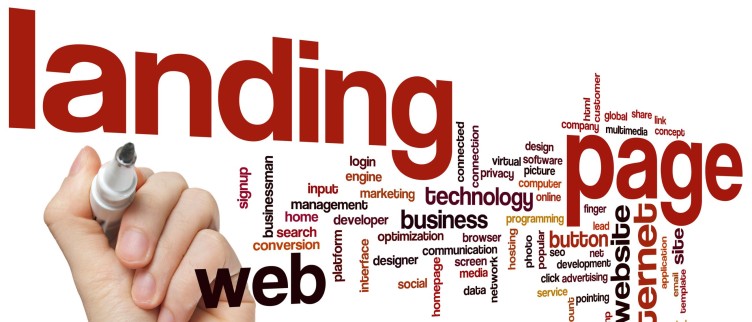The digital world is like a bustling city, and in this city, your business needs a place to call home. Think of a website as your online “headquarters” and a landing page as a “pop-up shop.” They’re both vital parts of your online presence, but they serve different purposes.
Imagine walking into a company’s headquarters. You’re greeted by a receptionist who can direct you to different departments. That’s like a homepage on a website, a digital ‘front door’ if you will. It welcomes all types of visitors – those who just happened to stumble upon it, those who followed a signpost (links from other sites), and those who came based on recommendations (organic search results). The goal of this online headquarters is to cater to a wide array of interests. Visitors can explore various areas like the product showroom, read about the company’s history, or check out what’s new on the blog.
Contrarily, imagine visiting a pop-up shop in a mall, promoting a new product line. The shop targets a specific group of mall-goers, who have been drawn in by flashy banners or exclusive discounts. That’s what a landing page is like. It’s designed for a specific group of people, often associated with a particular marketing campaign. The traffic here is more focused, generally from paid ads, newsletters, or specific social media promotions. The aim? To get these select visitors to do one thing – like sign up for a new product trial or make a purchase.
The actions expected from visitors differ for both a homepage and a landing page. A homepage is like a road map, guiding visitors to explore different parts of the website based on their interests. They might dig into blog articles, browse through products, or drop a line via the contact form. A landing page, on the other hand, is more like a friendly salesperson, nudging visitors to take one specific action. It’s designed to guide you, from the first line to the shiny ‘Buy Now’ button, towards making a purchase. There’s usually little else to distract you from this goal.
The content you find on a homepage is like an overview of the entire business. It introduces the brand, shares the company’s story, and showcases a variety of products or services. The aim is to cater to different visitor interests and inquiries. But a landing page is more focused. It zooms in on one specific thing – maybe a product or a service – and tells you why it’s great. It’s all about convincing you, through a carefully crafted blend of words, images, and maybe customer testimonials, that the offer is valuable and worth your immediate action.
The landing page needs to pay special attention to who’s visiting and why they’re there. It’s like being a good host at a party – you tailor your conversation based on who you’re talking to and what brought them there. For example, if you know that your visitors are millennials from a social media campaign, you’d want to ensure your landing page speaks their language and appeals to their tastes. Similarly, if you’re welcoming returning customers, offer them something that encourages them to stick around.
The end goal of the marketing campaign is also key in shaping the landing page. It’s like the climax of a good movie – everything that’s happened before leads up to it. Whether it’s getting people to sign up for a newsletter, driving sales for a product, or encouraging sign-ups for an event, everything on the page is designed to lead up to this grand finale.
But to make a landing page really stand out, it needs a few extra touches. Imagine being convinced by a seller not just because they tell you about the product, but also why they’re the best in the business (“Why Choose Us?”), and what extra perks you get (“Advantages of Using Our Services”). Maybe they also show you their loyal customers (“Our Clients”) and share positive reviews (“Testimonials”). Add some social media endorsements (“Social Proof”) and press features (“Press Articles”), and you’ve got a pretty convincing pitch!
By weaving these different elements together, you can create a landing page that doesn’t just catch visitors’ attention but persuades them to take action. And that, dear reader, is the secret sauce to a fantastic online marketing strategy!
Damian Geisinger – CEO Skyblue Digital – [email protected]
This article was created using AI copywriting assistance technology. Real humans, curated, edited, proofread, and reviewed the content.
